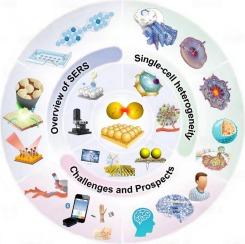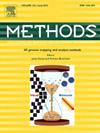Deciphering cellular heterogeneity: Breakthroughs and prospects of single-cell-level SERS analysis in precision medicine
IF 4.3
3区 生物学
Q1 BIOCHEMICAL RESEARCH METHODS
引用次数: 0
Abstract
Single-cell surface-enhanced Raman scattering (SERS) has emerged as a powerful tool for precision medicine owing to its label-free detection, ultrasensitivity, and unique molecular fingerprinting. Unlike conventional bulk analysis, it enables detailed characterization of cellular heterogeneity, with particular promise in circulating tumor cell (CTC) identification, tumor microenvironment (TME) metabolic profiling, subcellular imaging, and drug sensitivity assessment. Coupled with microfluidic droplet systems, SERS supports high-throughput single-cell analysis and multiparametric screening, while integration with complementary modalities such as fluorescence microscopy and mass spectrometry enhances temporal and spatial resolution for monitoring live cells. Despite hurdles in nanoprobe safety, complex spectral interpretation, and clinical translation, advances in AI-driven data processing (e.g., convolutional neural networks) and miniaturized devices are accelerating progress toward intraoperative guidance, improved liquid biopsy, and primary healthcare adoption. Looking ahead, its applications in single-cell metabolomics, exosome studies, and microbial detection hold promise for uncovering disease mechanisms and fostering personalized diagnostics and therapeutics.

解读细胞异质性:精准医学中单细胞水平SERS分析的突破与展望
单细胞表面增强拉曼散射(SERS)由于其无标记检测、超灵敏度和独特的分子指纹特征而成为精准医学的有力工具。与传统的批量分析不同,它能够详细表征细胞异质性,在循环肿瘤细胞(CTC)鉴定、肿瘤微环境(TME)代谢谱、亚细胞成像和药物敏感性评估方面尤其有前景。与微流控液滴系统相结合,SERS支持高通量单细胞分析和多参数筛选,同时与荧光显微镜和质谱等互补模式相结合,增强了监测活细胞的时间和空间分辨率。尽管在纳米探针安全性、复杂光谱解释和临床翻译方面存在障碍,但人工智能驱动的数据处理(如卷积神经网络)和小型化设备的进步正在加速术中指导、改进液体活检和初级卫生保健采用方面的进展。展望未来,它在单细胞代谢组学、外泌体研究和微生物检测方面的应用有望揭示疾病机制,促进个性化诊断和治疗。
本文章由计算机程序翻译,如有差异,请以英文原文为准。
求助全文
约1分钟内获得全文
求助全文
来源期刊

Methods
生物-生化研究方法
CiteScore
9.80
自引率
2.10%
发文量
222
审稿时长
11.3 weeks
期刊介绍:
Methods focuses on rapidly developing techniques in the experimental biological and medical sciences.
Each topical issue, organized by a guest editor who is an expert in the area covered, consists solely of invited quality articles by specialist authors, many of them reviews. Issues are devoted to specific technical approaches with emphasis on clear detailed descriptions of protocols that allow them to be reproduced easily. The background information provided enables researchers to understand the principles underlying the methods; other helpful sections include comparisons of alternative methods giving the advantages and disadvantages of particular methods, guidance on avoiding potential pitfalls, and suggestions for troubleshooting.
 求助内容:
求助内容: 应助结果提醒方式:
应助结果提醒方式:


